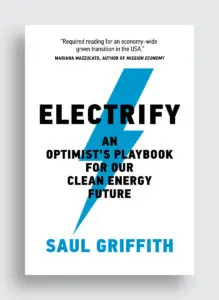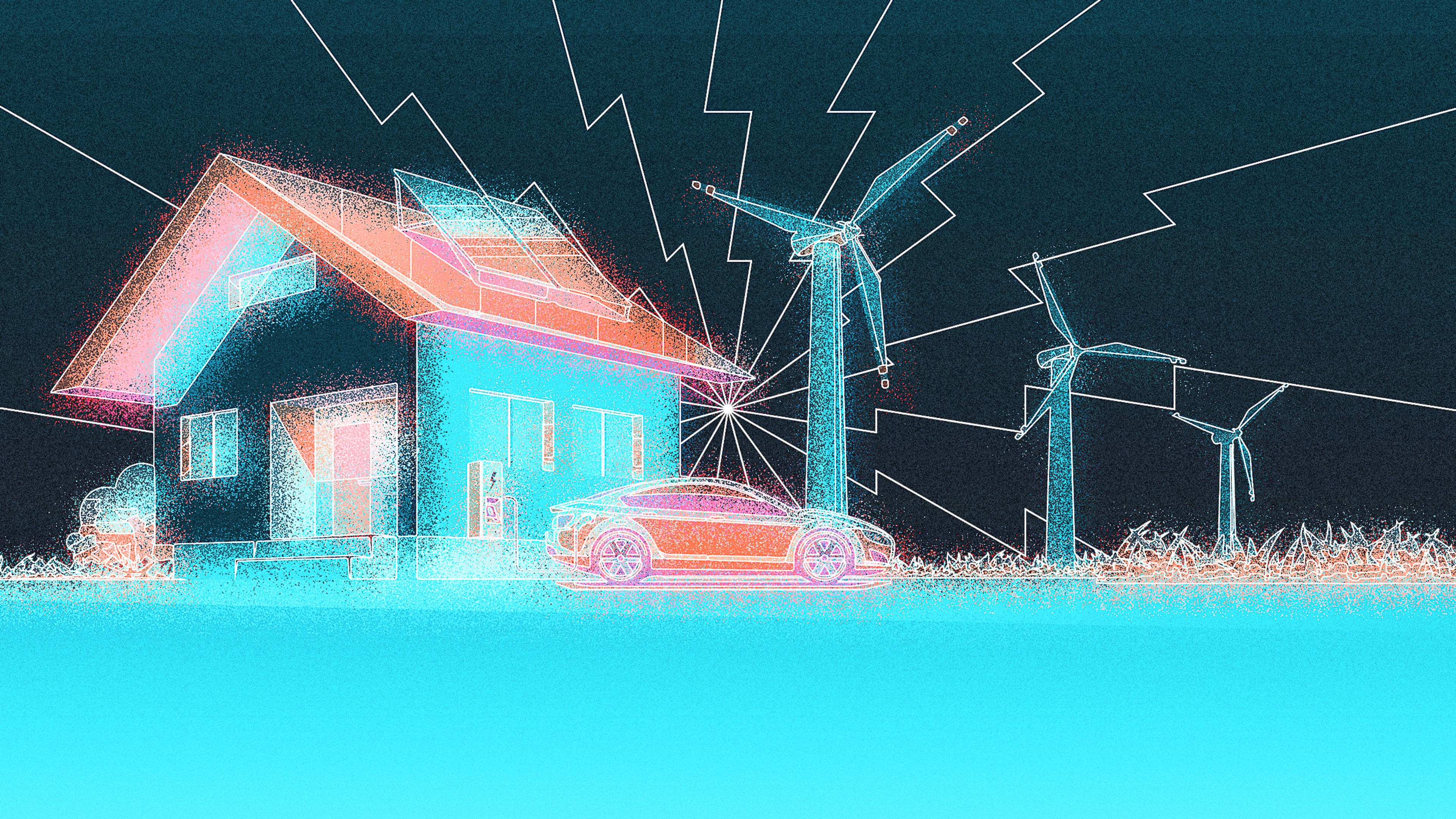This scenario of replacing everything that uses energy with a zero-carbon solution when it’s retired is called a 100% adoption rate. Today, when a car reaches retirement age, there is only a small chance that it will be replaced by an electric vehicle (EV). If 1 in 10 people buys an EV, then we say the adoption rate is 10%. Because machines like your car have long lifetimes, that means that traditional gas-powered cars will remain on the road for a long time. To reduce emissions, though, our world can no longer afford those slow adoption rates. We need everyone buying electric vehicles. Likewise, we need every corporation purchasing a power plant to choose solar instead of natural gas and wind instead of coal. Fortunately, we are further along with this project than you might expect. In 2018, 66% of new power plants globally were powered with renewables or carbon free! But while this is good, it is not quite enough—across the board we now need adoption rates of 100%. This complete adoption rate is required by the end-game decarbonization we ultimately need.

Water heaters last 10 years; refrigerators, 12; clothes dryers, 13; rooftops, 15; furnaces, 18; cars and trucks, 20; thermostats, 35; power plants, 50. No matter how effective climate activists are at convincing people to buy green technology, we are unlikely to decarbonize faster than the natural lifetime of existing machines. That’s why we’ll need incentives such as buy-back programs and subsidies to swap out fossil fuel-burning machines for electric ones as soon as possible.
We can buy ourselves a little extra time if we shut down the most polluting infrastructure before it ends its natural life. This is why people advocate for early retirement of fossil-fuel power plants, particularly those that burn coal. But consumers, utilities, and other organizations will require extreme motivation to retire their fossil fuel-dependent infrastructure early because of their sunk costs. You aren’t going to give up your gasoline-burning car unless there are financial incentives to make it easy for you to replace it with a new EV.
A 100% adoption rate is only achieved by mandate—and robust financial incentives to back it up. It typically takes decades for a new technology to become dominant by market forces alone as it slowly increases its market share each year. Electric cars still only represented 2% of sales of U.S. vehicles in 2018, though they represented 5% of all vehicle sales in California in 2019; but this is 15 years after Tesla was founded and 20 years after GM shut down the production of its first electric car, the EV1. We need EVs and other emissions-free vehicles to be 100% of vehicle sales as soon as is physically, and industrially, possible. We don’t yet build even 1 million EVs per year in the US, and the new vehicle market is 17 million cars, trucks, SUVs, and minivans per year.
The challenge of 100% adoption presents a giant conflict that we need to address head-on: the “free market” as we know it is not up to the task of keeping the world below 2 degrees Celsius/3.6 degrees Fahrenheit and has absolutely no chance of allowing us to hit 1.5 degrees Celsius/2.7 degrees Fahrenheit. It may sound like this is a screed for government intervention, but it isn’t! I am merely stating what is technically necessary. If your toilet was broken and you called me and asked me what to do, I wouldn’t tell you “the free market will fix that,” I’d tell you to call a plumber. That is where the world is when it comes to climate change: no amount of hope in free-market solutions can change the fact that it is now too late to rely on the free market to act fast enough. We need to call the plumbers (and electricians, and engineers, and manufacturers) to fix our infrastructure now.
This is not to say that businesses and the market don’t have roles; they are critical. But in emergencies, ideologies must be put aside. When Mother Nature arm wrestles with the invisible hand, she will always win. As my friend, the economist Skip Laitner, says, the free market needs an invisible foot to give it a swift kick in the ass now and then. It is urgent for every player to act and do their part. Individuals, governments, businesses, and the market—we need every tool in the box, and we need them working together.
The emergency response to this climate emergency is fairly simple in concept:
- We must electrify the vast majority of our energy supply and uses. That electricity must come from renewables and nuclear power.
- We must transform our heavy infrastructure as well as the personal infrastructure we create with our household purchasing decisions.
- Your next car needs to be electric. Your next furnace needs to be a heat pump. You need solar on your roof. This is your personal decarbonization infrastructure.
- We must demand that politicians drive this transformation faster than free-market forces alone are capable of doing.
- Industry must be incentivized to ramp up production of green technologies at a rate similar to wartime mobilization.
- Bankers and policymakers need to create new financing mechanisms so that everyone can afford to be part of the solution.
Decarbonizing our country and switching to clean energy will create jobs in every zip code—in manufacturing, construction, installation, infrastructure, agriculture, and forestry. This is a chance to revitalize our cities, rejuvenate our suburbs, and reignite our rural towns. We can rebuild a prosperous and inclusive middle class, as we enjoyed after World War II, with tens of millions of good new jobs that are vital and prideworthy. If America does it right, everyone’s energy costs will go down. Everyone has a role to play in the war effort.
We now face a climate emergency as challenging as all of our other 20th-century emergencies combined. It requires mass mobilization with extraordinary speed and resources. Without a doubt, you are worried, scared, or worse. That’s reasonable, but we can’t do nothing, and this is also a vast opportunity to make the world, and our economy, better for everyone.
This excerpt is taken from Electrify: An Optimist’s Playbook for Our Clean Energy Future by Saul Griffith, which publishes from MIT Press on October 12.
Recognize your brand's excellence by applying to this year's Brands That Matters Awards before the early-rate deadline, May 3.
